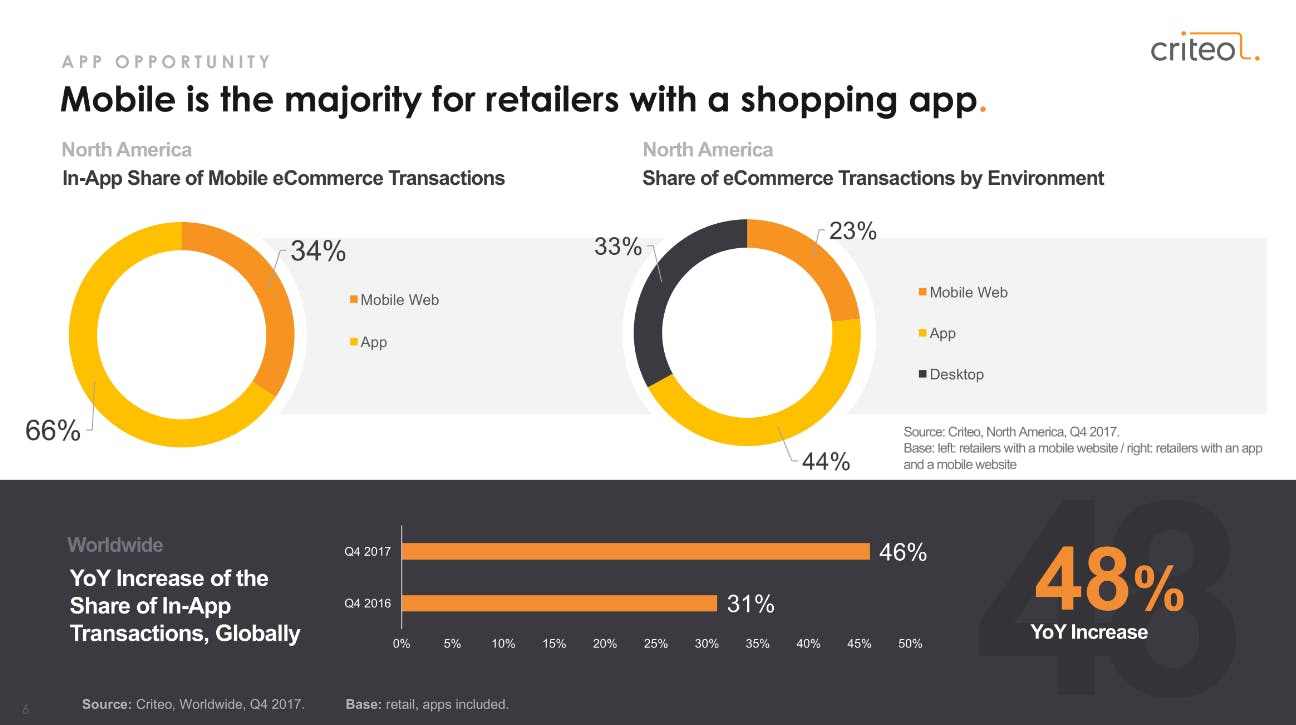
All told, mobile apps account now for 44% of ecommerce transactions in North America as compared to 33% and 23% for desktop and mobile web, respectively. On a global basis, year-over-year, mobile apps have seen their share of transactions grow by nearly 50%.
The implication: retailers that don’t have a mobile app are at a growing disadvantage.
In reality, however, it’s probably not exactly that simple. For one, some retail subcategories, such as a sporting goods, fashion/luxury and health/beauty, have much higher shares of mobile sales. Retailers in subcategories in which mobile sales make up a lower percentage of overall sales might not be as affected if they don’t have a mobile app.
Criteo also found that retailers with low mobile sales derive more of their sales from cross-device transactions, leading it to suggest that “combining cross-device data helps make up for a below-average share of sales on mobile.”
Even so, if the trends Criteo identified continue, it would appear that shunning mobile apps is something that many retailers will find increasingly difficult to do.
Challenges remain
Of course, mobile apps are not a ‘if you build it, they will use it’ proposition. Getting users to install mobile apps can be costly, and many users don’t even open all the apps they install. Of those who do, retention can be a brutally challenging exercise.
That means retailers launching mobile apps need to deliver great user experiences and be savvy about how they engage their mobile users. For instance, research from mobile app commerce SaaS provider Poq found that mobile app users who make a purchase within seven weeks of downloading an app have double the retention, suggesting that retailers might want to consider employing special incentives to engage new app users.
A piece of the puzzle
It’s important for retailers to remember that apps are just one piece of the omnichannel puzzle.
Criteo found that 26% of all desktop transactions are preceded by a click on a mobile device. Retailers that are able to match intent see an average uplift of 17% in average order values compared to unmatched shoppers. And although omnichannel shoppers only represent 7% of all shoppers, they are responsible for over a quarter (27%) of sales.
What’s more, Criteo says that “omnichannel retailers that can combine their offline and online data can apply over four times as much sales data to optimize their marketing efforts.”
So while mobile retail apps are clearly increasingly important, other channels still have the potential to play a key role. Put simply, the whole of all channels is greater than the sum of their parts.

Comments